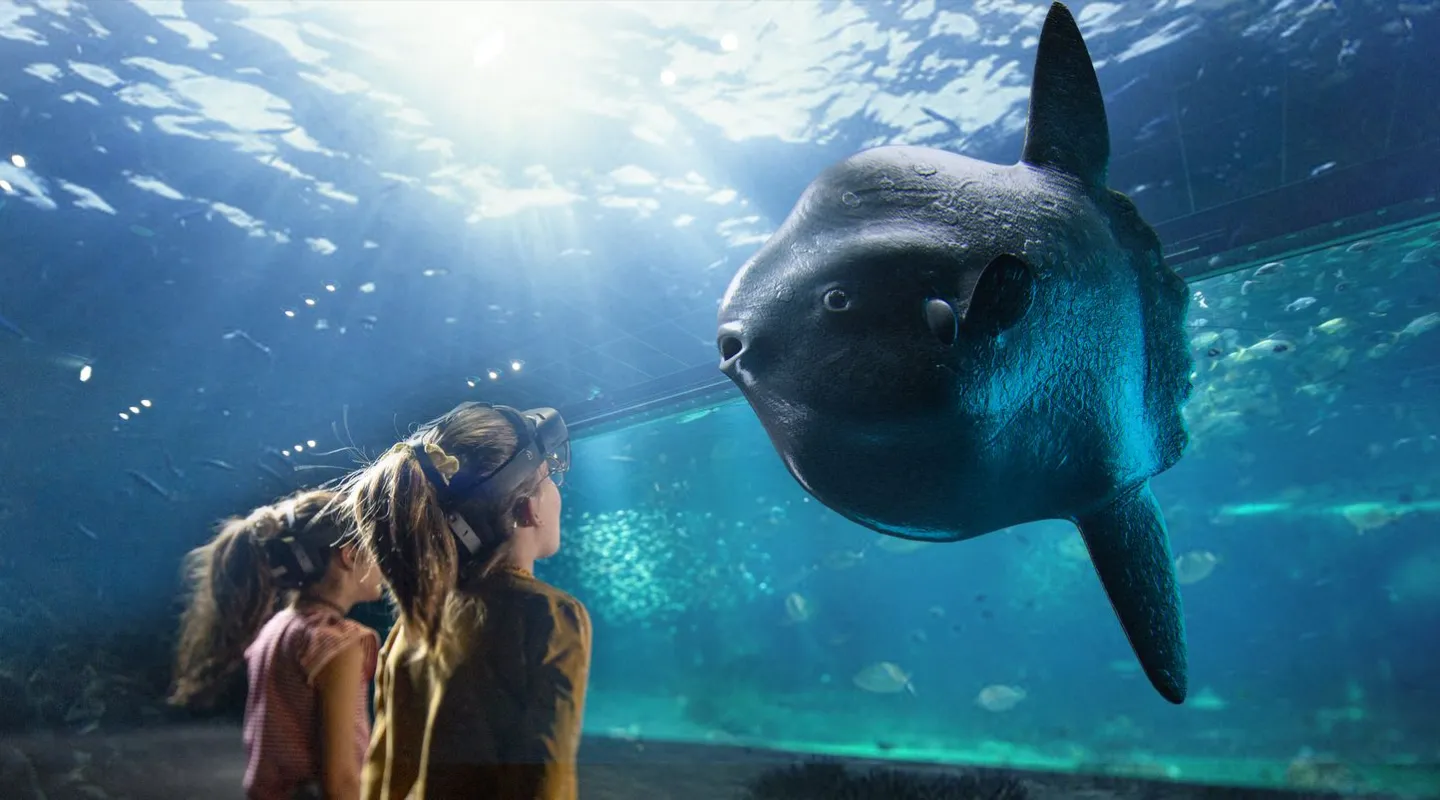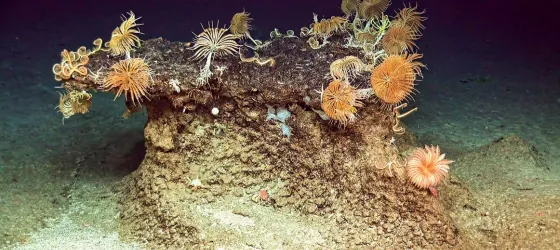VIRTUAL ANIMAL IN AUGMENTED REALITY
The sunfish is one of the impressive figures that you will be able to discover in the Grand Large experience.

Pelagic fish
VIRTUAL ANIMAL IN AUGMENTED REALITY
The sunfish is one of the impressive figures that you will be able to discover in the Grand Large experience.

Identity card
It lives in tropical, subtropical and temperate waters around the world.
Pelagic (open sea).
50 cm up to more than 3 metres long. up to 2 tonnes
Jellyfish, salp, ctenophore, squid, small crustaceans

They are the biggest (and the heaviest too!) representative of bony fish.
And with very good reason!
Sunfish never stop growing: their growth depends directly on the animals they feed on. To put it in a nutshell, the more they eat the bigger they get.
When sunfish drift on the surface soaking up the sunlight, they also makes the most of this to have their parasites removed by certain birds. This is because they are usually infested by some forty different species of parasites that they attempt to get rid of in various ways.
The biggest bony fish in the world, it represents life on the high seas, both on the surface of the oceans and in their depths.
The ocean sunfish, or Mola mola to give its Latin name, is a pelagic fish whose unusual silhouette is easily recognisable.
A laterally flattened oval body whose colour varies from a silvery grey to white, a protuberance on its head, very small pectoral fins, and dorsal and anal fins whose length can nearly double this fish’s height. Its caudal fin has disappeared during the course of its evolution to become an appendage called a clavus; this links the dorsal fin to the anal fin but does not help it to propel itself. It uses its dorsal and anal fins to advance.
Often swimming close to the surface of the sea, its dorsal fin can be confused with a shark’s fin. Indeed, ocean sunfish either swim upright with their dorsal fin protruding which gives them a sculling motion, or lying on their side drifting along with the current on the surface. It is likely that in the latter case it does this to restore its heat reserves. The sunfish owes its name to this. Curiously its French name- which translates into English as moonfish – comes from its round shape: at night its silhouette looks like the reflection of the Moon in the sea.
The sunfish does not have scales or a swim bladder.
They are the victim of drift nets and of the plastic bags they swallow because they confuse them with jellyfish.
JOURNEY ON THE HIGH SEAS

Augmented-reality animals
The Ocean Mag
A la une
Faced with the threat of deep-sea mining, we must join forces to protect the deep seabed!

Article
What lies beneath the surface of the ocean?
Article
Depending on whether they live in open water or on the bottom, fish in the water column have a morphology adapted to their living environment.